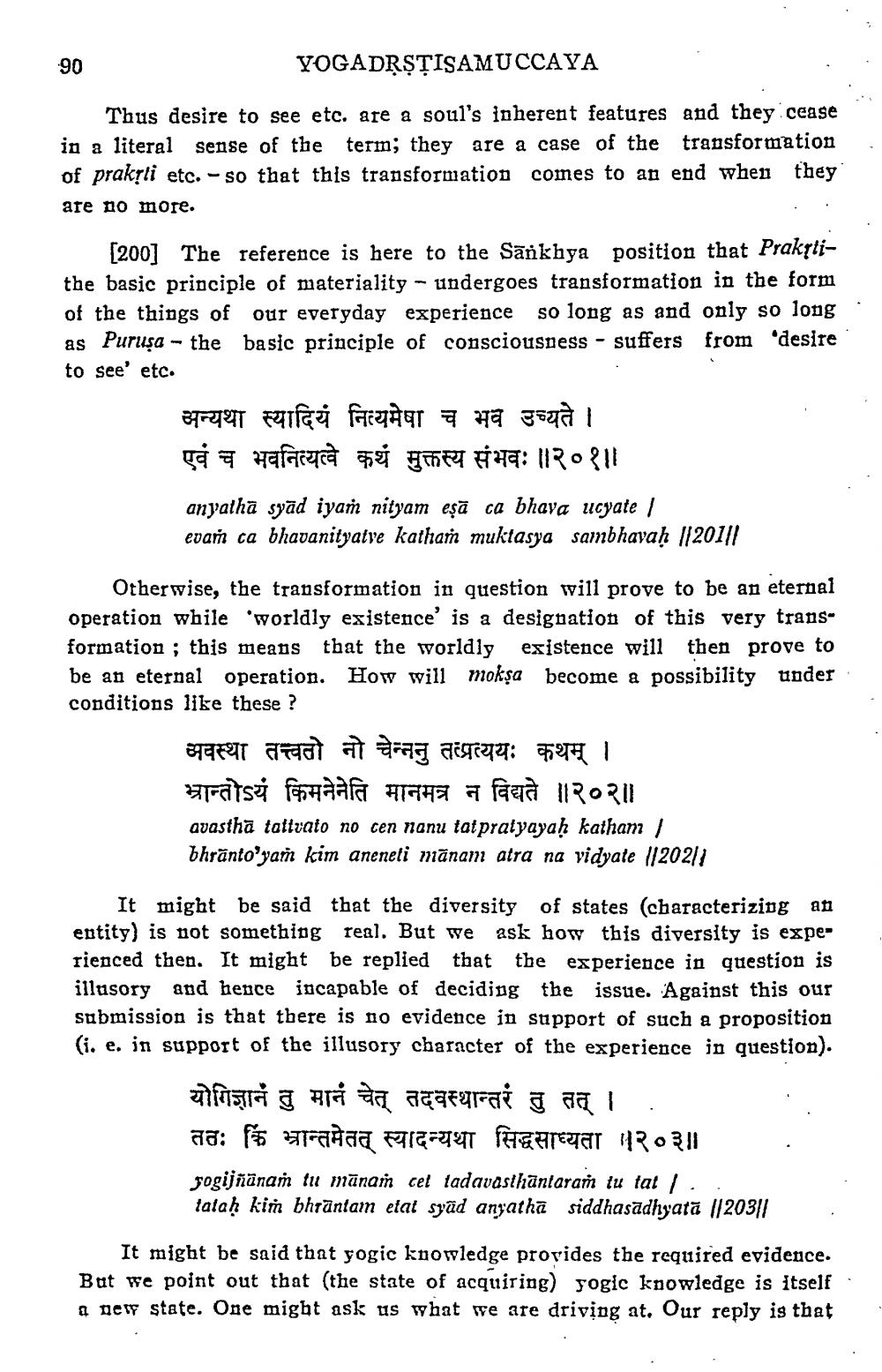________________
90
VOGADRȘTISAMUCCAYA
Thus desire to see etc. are a soul's inherent features and they cease in a literal sense of the term; they are a case of the transformation of praksti etc. - so that this transformation comes to an end when they are no more.
[200] The reference is here to the Sānkhya position that Prakytithe basic principle of materiality - undergoes transformation in the form of the things of our everyday experience so long as and only so long: as Puruşa - the basic principle of consciousness - suffers from 'desire to see' etc.
अन्यथा स्यादियं नित्यमेषा च भव उच्यते । एवं च भवनित्यत्वे कथं मुक्तस्य संभवः ॥२०॥
anyatha syād iyaṁ nityam eşā ca bhava ucyate / evan ca bhavanityatve katham muktasya sambhavaḥ 1/201||
Otherwise, the transformation in question will prove to be an eternal operation while 'worldly existence is a designation of this very transformation ; this means that the worldly existence will then prove to be an eternal operation. How will mokṣa become a possibility under conditions like these ?
अवस्था तत्त्वतो नो चेन्ननु तत्प्रत्ययः कथम् । भ्रान्तोऽयं किमनेनेति मानमत्र न विद्यते ॥२०२॥ avastha taltrato no cen nanu tat pralyayaḥ katham | bhrānto'yam kim aneneti mānam atra na vidyate (120211
It might be said that the diversity of states (characterizing an entity) is not something real. But we ask how this diversity is experienced then. It might be replied that the experience in question is illusory and hence incapable of deciding the issue. Against this our submission is that there is no evidence in support of such a proposition (i. e. in support of the illusory character of the experience in question).
योगिज्ञानं तु मानं चेत् तदवस्थान्तरं तु तत् । . ततः किं भ्रान्तमेतत् स्यादन्यथा सिद्धसाध्यता १२०३॥ sogijñānam tu mānam cel tadavasthāntaraṁ tu tat . talah kim bhrāntain etat syâd anyatha siddhasadhyatā (203||
It might be said that yogic knowledge provides the required evidence. But we point out that (the state of acquiring) yogic knowledge is itself a ger state. One might ask us what we are driving at. Our reply is that




